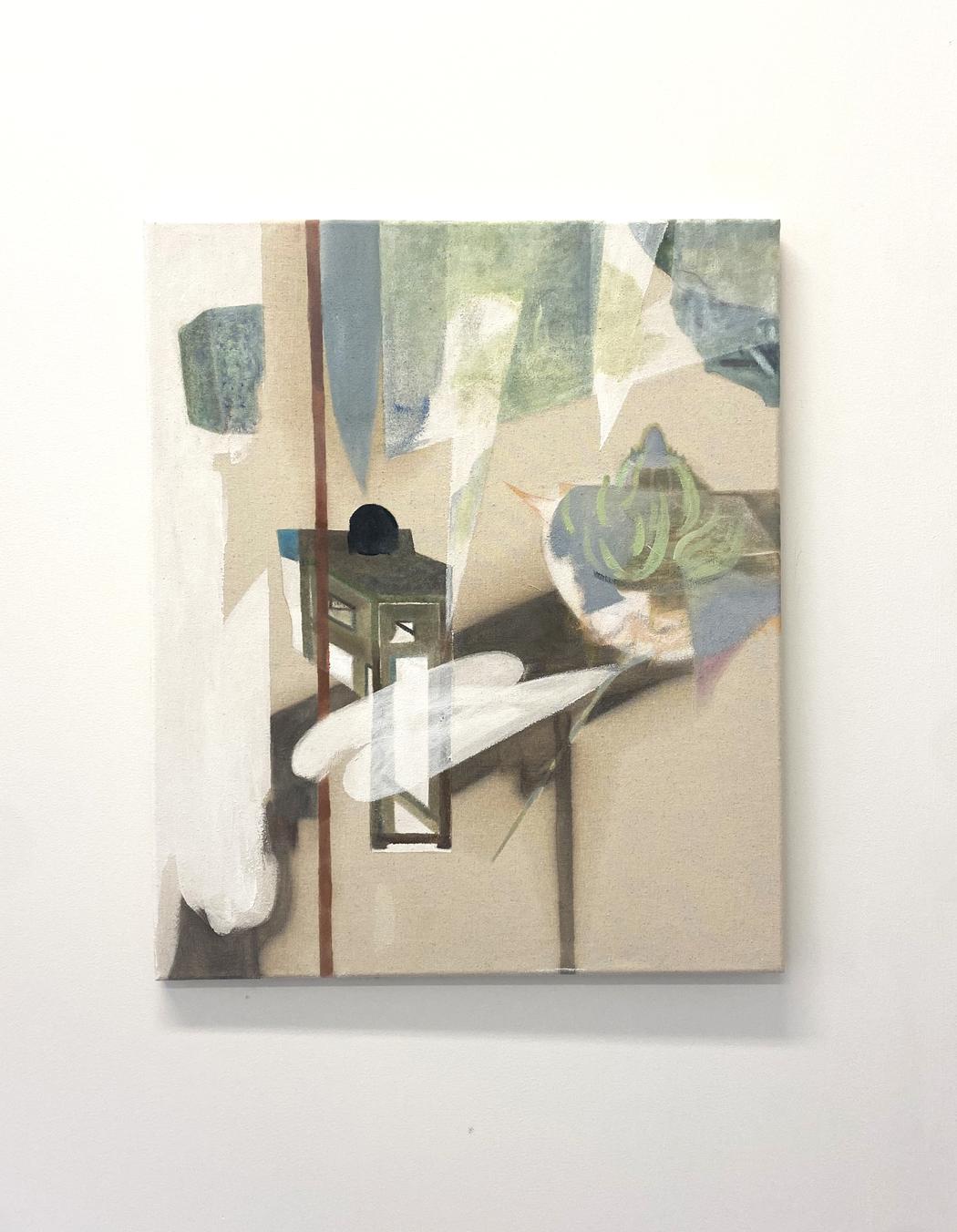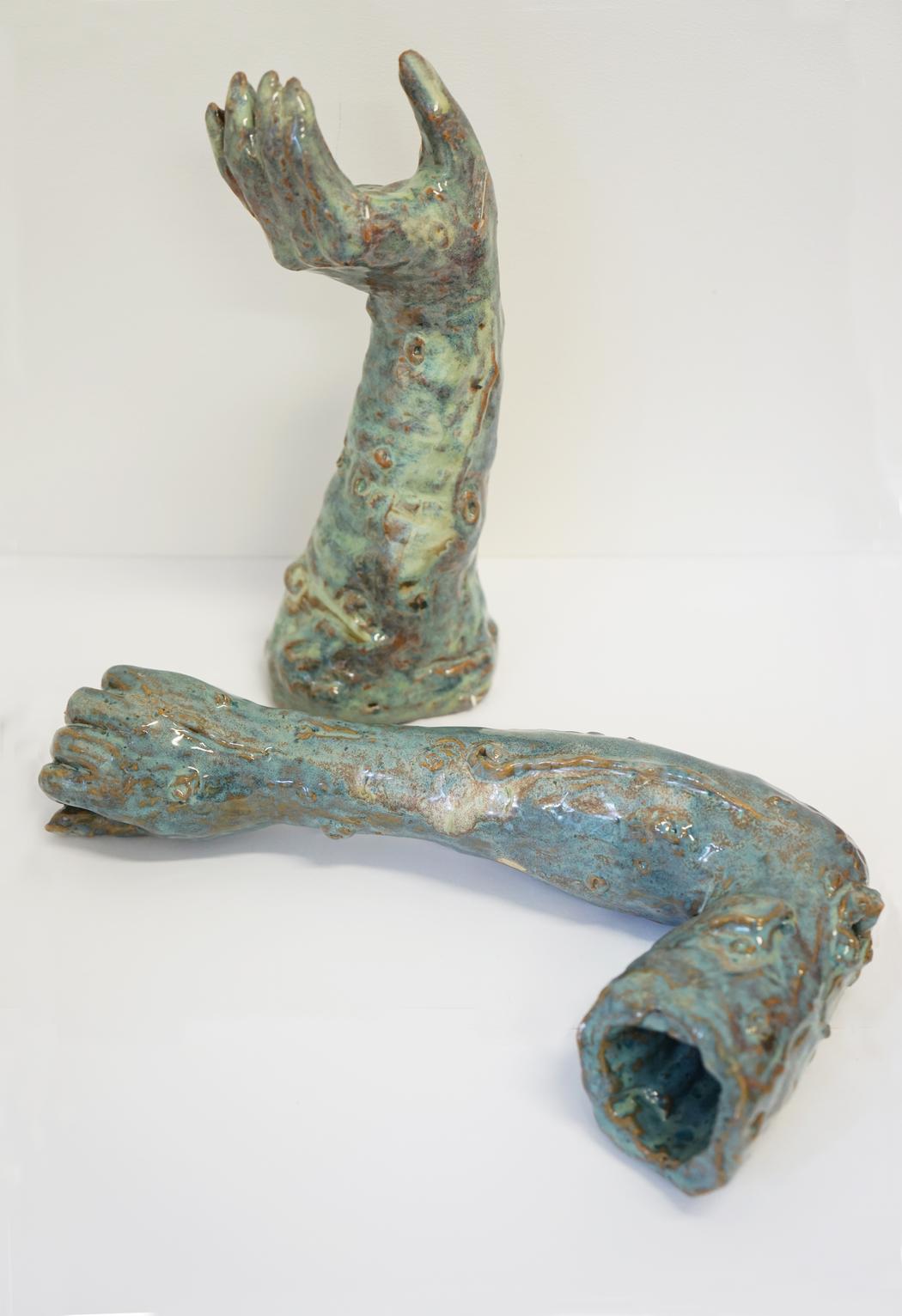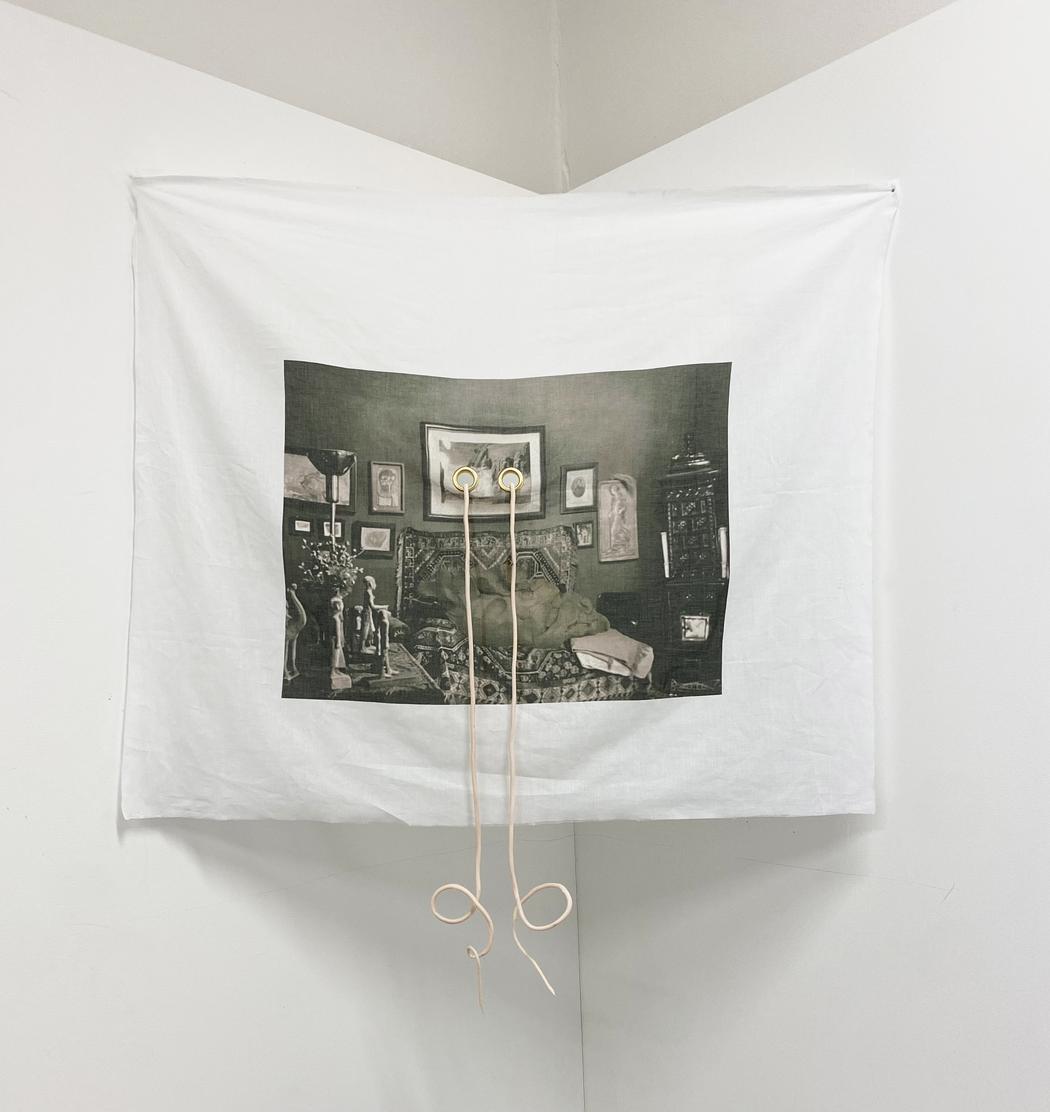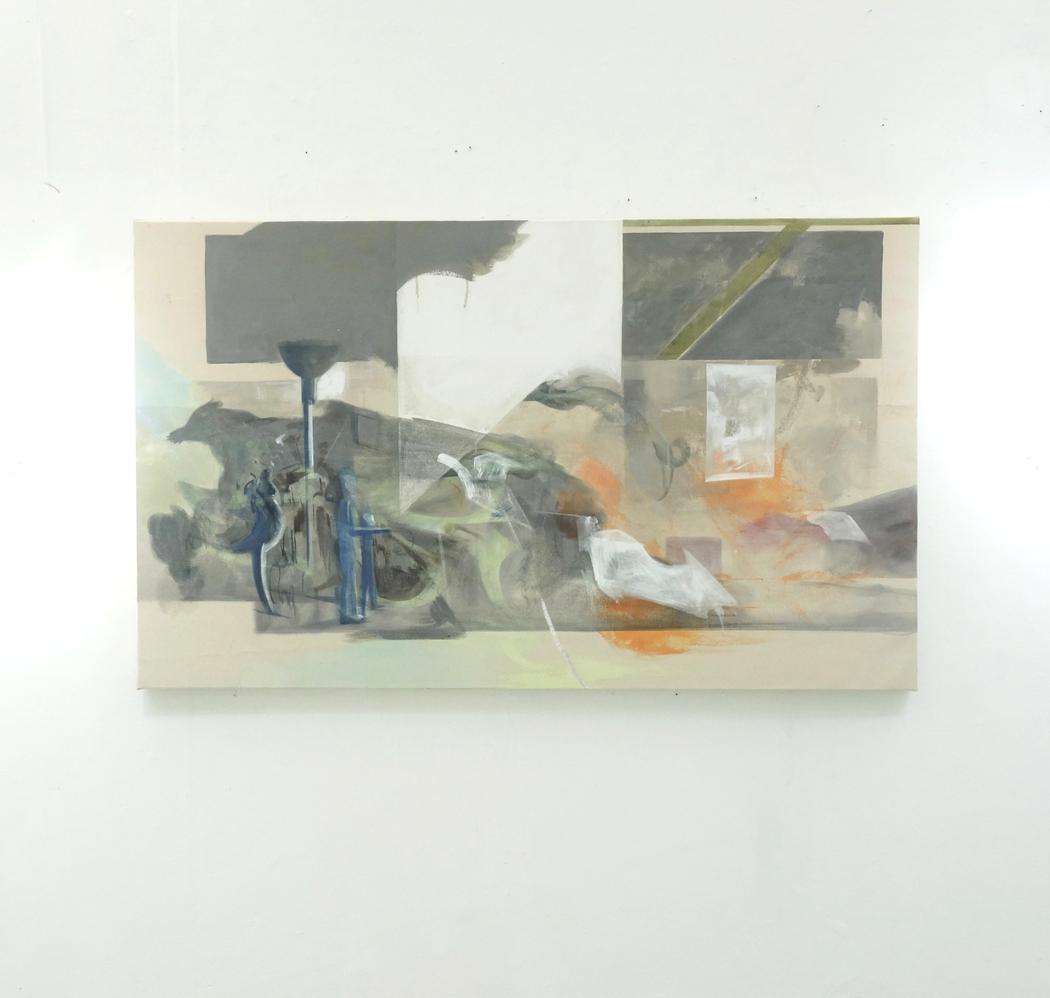Yiyang Chen
Year of birth: 1998
Where do you live: Glasgow, UK
Your education: The Glasgow School of Art, Practice-Led PhD in Fine Art, UK, 2023 – Present; MA (Distinction), M.Litt Fine Art Practice (Painting), UK, 2021–2022; Lu Xun Academy of Fine Arts, BA Fine Art (Oil Painting), China, 2016–2020
Describe your art in three words: Liveness, queer, speculative
Your discipline: Painting, moving image, performance, ceramic, writing
Website | Instagram
Your practice spans painting, video, ceramics, performance, and writing. How do you decide which medium to use for a specific idea?
Thank you for the question. This has actually been asked a lot! In most cases, I do not see the medium in the first place. However, I tackle the materials with care, serving the exploration of my hand-touch sensibility. I let my hands take the lead to encounter and record the sensations my body and I feel about the materials—whether clay, canvas, or just sheets of paper. I investigate making and writing as creative approaches, as bodily engagements, and as self-reflexive configurations.
Much of your work explores themes like the monstrous, touch, and the gaze. What drew you to these particular concepts?
My research started with a focus on body politics entrenched in both the East and the West—from mythology to Laura Mulvey’s gaze theory and representations, to demonised female figures in artefacts, and the concept of abjection articulated by Julia Kristeva. The most striking and empowering reading I encountered, which led me to delve into the cultural definitions of monsters in societies, was trans scholar Paul B. Preciado’s brilliant speech/book Can the Monster Speak? (2019), and his definition of “monsters” as entities whose faces, bodies, and behaviours cannot yet be considered true within a predetermined regime of knowledge and power. I am thinking of metaphors for a speaking body or a censored body. This is rooted in my embodied “reading” experience, whether it involves texts or images. My practice delves into a monstrous manifestation in which the “body” gives material form to an idea that has no form—an assemblage that is abstract.
 Yiyang Chen | Myths Of Disavowal | 2024
Yiyang Chen | Myths Of Disavowal | 2024
What role does research play in your creative process? Could you share how a recent work emerged from your research?
As an artist and PhD researcher, I draw a clear line between research and visualisation, as I carefully resist the idea that academic writing describes/speaks for what I have done in my hands-on, studio-based practice. Or put another way, I refuse to ruin the fun by framing things to serve specific terms. I did a funded performance project this year in Vienna, which was also a week-long archival research project where I examined the Viennese museum and library collections as sources, surfaces, and post-colonial sites. Through bodily engagement and acts of making and writing, my gestures—captured by the camera in this performance—challenge the institutional roles in preservation, interpretation, gatekeeping, hierarchy, and racism.
Your exhibition Someday Somehow challenged digital representations of East Asian women. How did audiences respond to that work?
Someday Somehow (2022) was my first-ever solo exhibition, in which I intended to claim the gallery space with my video installations as a form of resistance against the representation of East Asian women’s body image as highly commercialised and an integral part of the capitalist mode of gaze entertainment—considering the reward systems, comments and gifts that can be directly transformed into benefits and income. I basically just hate how it works. It inevitably reinforces the distorted East Asian beauty standards shaped by impressions of pale skin, slim figures, etc. I invited people who visited and entered the space to rethink their position in viewing/consuming these subjects, formed by this “symbolic order,” shaped by a different cultural and political context. I’m still very grateful for all the stories and opinions they shared with me—such as how they found this East Asian perspective resonated with them, but with a sense of “unfamiliarity.” All very interesting and thought-provoking for me, which pushed my practice further.
 Yiyang Chen | Myths Of Disavowal | 2024
Yiyang Chen | Myths Of Disavowal | 2024
How does working between Glasgow and your Chinese background influence your artistic identity?
Such a great question! I think about this a lot. My hometown, Shenyang—a major city in the northeast of China—shares similarities with Glasgow in terms of the last century’s industrial history, unavoidable urban decay, warm people, cold winters, and salty food. I like the novel Shuggie Bain (2020) by Douglas Stuart, which illustrates a vivid picture of a Glaswegian working-class family and the broader industrial backdrop of the 1980s. I’ve heard quite a few similar stories from members of my family from the previous generation. My artistic practice is highly driven by embodied experience that spans both where I come from and where I currently live. This is the way I devote my genuine emotions and feelings to my work, so that every piece of memory and transgenerational story is valid in this self-analytical approach to fine art practice.
There’s a strong physicality in your work—especially around gesture and touch. How important is the body in your art?
I answered a similar question from the audience in the Q&A section of a conference at the University of Edinburgh this month. I perceive the body as a carrier or container for my feelings and sensations, as described by Ursula K. Le Guin. Embodied practice is part of the legacy left to us by 1970s feminism—a sustainable way of living. Even if you can’t afford a studio, you can still carry on, finding your voice and speaking for yourself through the body. The powerful performance artists Carolee Schneemann, Mierle Laderman Ukeles, and filmmaker Chantal Akerman were so important—and still are.
 Yiyang Chen | Psychic Home | 2025
Yiyang Chen | Psychic Home | 2025
Are there particular artists, writers, or theorists who have significantly shaped your thinking?
Absolutely—apart from all those I mentioned above, I would also like to highlight Audre Lorde. Her essay Uses of the Erotic(1978) discusses the cost of detaching the erotic as a source of power, and how the erotic itself holds the potential to create change. She writes, “the erotic is a resource within each of us that lies in a deeply female and spiritual plane, firmly rooted in the power of our unexpressed or unrecognized feeling. In order to perpetuate itself, every oppression must corrupt or distort those various sources of power within the culture of the oppressed that can provide energy for change.” Also, Bell Hooks and Black feminist art practices, trans studies by Susan Stryker, Chinese queer studies by Hongwei Bao, queer of colour theorist José Esteban Muñoz, as well as The Argonauts (2015) by Maggie Nelson—which I’ve been reading recently—have given me deep insights into finding my voice and stance on agency.


Leave a Reply
You must be logged in to post a comment.